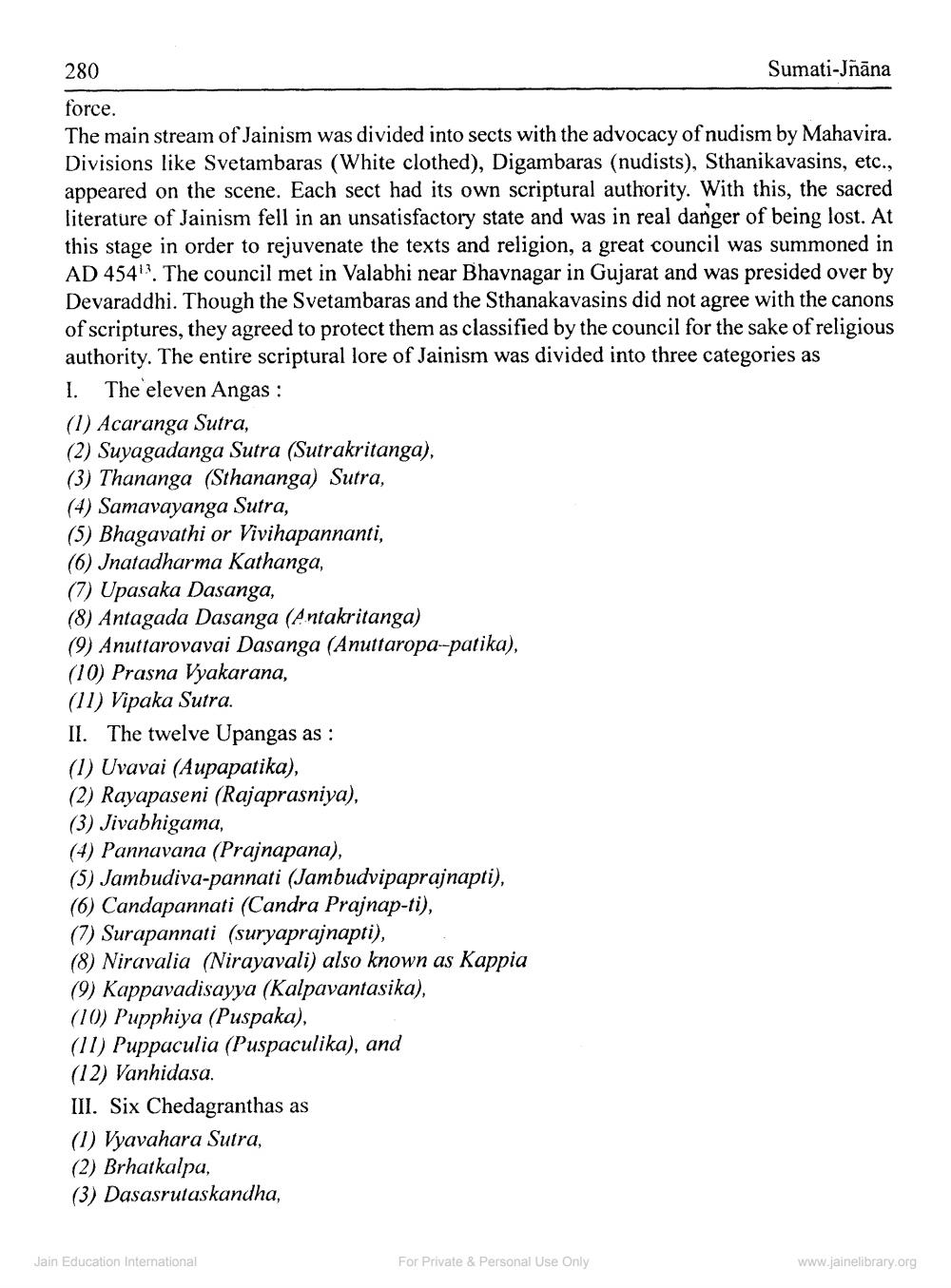________________
280
Sumati-Jñāna
force. The main stream of Jainism was divided into sects with the advocacy of nudism by Mahavira. Divisions like Svetambaras (White clothed), Digambaras (nudists), Sthanikavasins, etc., appeared on the scene. Each sect had its own scriptural authority. With this, the sacred literature of Jainism fell in an unsatisfactory state and was in real danger of being lost. At this stage in order to rejuvenate the texts and religion, a great council was summoned in AD 45413. The council met in Valabhi near Bhavnagar in Gujarat and was presided over by Devaraddhi. Though the Svetambaras and the Sthanakavasins did not agree with the canons of scriptures, they agreed to protect them as classified by the council for the sake of religious authority. The entire scriptural lore of Jainism was divided into three categories as 1. The eleven Angas : (1) Acaranga Sutra, (2) Suyagadanga Sutra (Sutrakritanga), (3) Thananga (Sthananga) Sutra, (4) Samavayanga Sutra, (5) Bhagavathi or Vivihapannanti, (6) Inatadharma Kathanga, (7) Upasaka Dasanga, (8) Antagada Dasanga (Antakritanga) (9) Anuttarovavai Dasanga (Anuttaropa--patika), (10) Prasna Vyakarana, (11) Vipaka Sutra. II. The twelve Upangas as : (1) Uvavai (Aupapatika), (2) Rayapaseni (Rajaprasniya), (3) Jivabhigama, (4) Pannavana (Prajnapana), (5) Jambudiva-pannati (Jambudvipaprajnapti), (6) Candapannati (Candra Prajnap-ti), (7) Surapannati (suryaprajnapti), (8) Niravalia (Nirayavali) also known as Kappia (9) Kappavadisayya (Kalpavantasika), (10) Pupphiya (Puspaka), (11) Puppaculia (Puspaculika), and (12) Vanhidasa. III. Six Chedagranthas as (1) Vyavahara Sutra, (2) Brhatkalpa, (3) Dasasrutaskandha,
Jain Education International
For Private & Personal Use Only
www.jainelibrary.org




